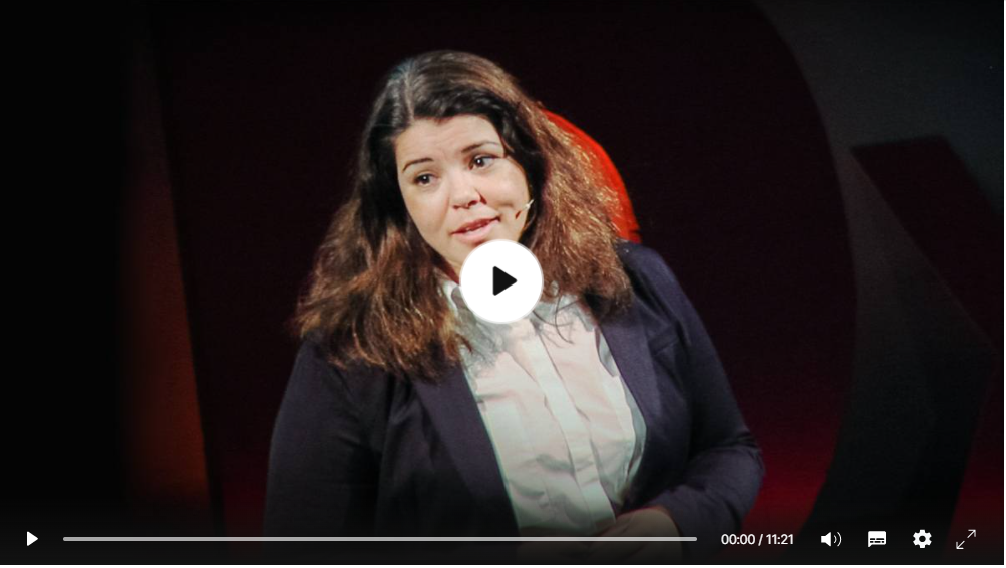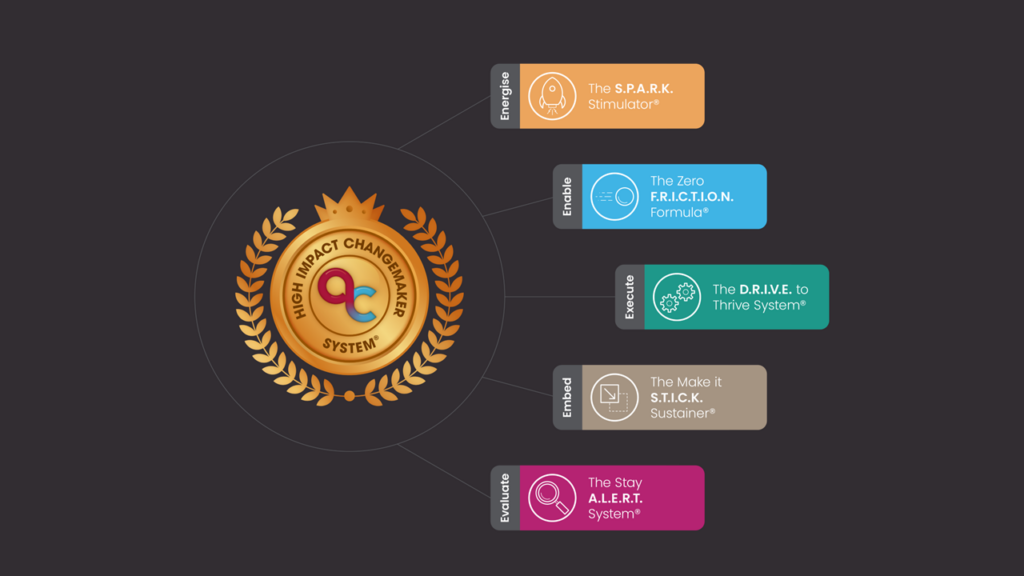The biggest problem with communication…
By Applied Change
Share

…is the illusion that it’s taken place (George Bernard-Shaw).
So what do I mean by communication?
The Oxford English Dictionary defines communication as ‘the transmission or exchange of information, knowledge, or ideas, by means of speech, writing, mechanical or electronic media’. Communication is essential to success, particularly when our businesses are undergoing transformation. However, according to the Project Management Institute, poor communication was the reason that one-third of projects failed. So how can we ensure that our communication contributes positively to effective organisational change?
In this article, we examine:
- What is a communication strategy?
- The elements of a successful communication strategy
- What causes communication failure?
- How to make business communication more effective
What is a communication strategy?
A communication strategy is the process of thinking through and planning how we can inform and engage those who are involved in or affected by the change. A well designed strategy will have a clear purpose and take into account the different ways in which we receive and process information. It will also include provision for testing how the communication has landed so adjustments can be made as needed. Most importantly it will include genuine two way dialogue.
Like all strategies and plans, it will need to be continually reviewed and adapted based on the learning and feedback as you move forward.
The elements of a successful communication strategy
A clear purpose
If we’re not clear enough on the purpose of our communication, it’s highly likely the core messages will be less coherent and that will serve to cause confusion, which is very likely to lead to concern and therefore resistance. In a change situation the emphasis should be on motivating everyone to get involved and make the change a success whilst simultaneously reducing any concerns they may have.
A well-defined communication strategy will also have clear and measurable outcomes.
Defined audiences
Our target audiences might include our customers, staff, or suppliers, each of which will have different needs and so the messages will be shaped appropriately. It’s always worth taking the time to set out the target audiences and the messages they will receive to ensure that each group is catered for in a way that is appropriate for them..
A range of communication methods
Ideally, messages will be short, regular, clear and specific, using a range of different channels and communication methods. For example, if there are organisational changes ahead, face-to-face staff briefings would most likely be part of the mix, maybe one or more videos for the company intranet, some articles for the staff newsletter, informal chats over lunch, Q&A sessions and optional one-to-one walk-in sessions to talk through any concerns. When done well, clear communication results in employees feeling they have the tools, information and motivation they need to succeed.
It’s worth remembering that the right message delivered in the wrong way, time or place can have devastating consequences. Also saying nothing when something is expected can very quickly create suspicion and undermine morale.
Using a mix of communication types
Each of us tends to have a preference in the way we receive information, broadly split into 3 types:
Visual: People in this group tend to prefer visual representation. You’ll hear them saying things like “I can see how that would work” or “I’m struggling to visualise that”.
Auditory: This group has a preference for audio or spoken word. They will tend to pick up more on the words and the tone and accept it if it sounds right to them. Typically they use language like “That sounds about right” or “I hear what you say…”
Kinesthetic: The preference here is for more physical interaction and a stronger emphasis on emotions. Learning and absorbing information for this group is typically more hands on.
The important thing is to ensure a mix of communication media and language in order to have the widest possible appeal.
A clear timeline
For communication to be effective, it must be delivered at the optimum time. This will differ for each target audience. For example, we might need to tell our staff about a business transformation project before we tell our suppliers. Draw up a timeline that clearly shows which messages are to be communicated when. Consider also what else is going on around that time: is it the middle of a holiday period when the people we need to speak to will be away; what other messages are scheduled for then, that could overshadow what we want to say; is there a time difference to bear in mind?
Evaluation
Regularly evaluating the effectiveness of the communication strategy gives us the opportunity to refine our messages and how we’re delivering them. Focus groups and feedback surveys provide insights into how target audiences are responding, as will observing whether behaviour or attitudes have changed. In change scenarios, change readiness assessments can also be a useful way to understand how well the communications are being received in terms of how people are feeling about the change. At the end of the project, evaluating the communication strategy as a whole will also provide valuable lessons learned to draw on in the future.
Having created a communication strategy, the next step is implementation. At this point, communication strategies can fail if the communication itself fails.
What causes communication failure?
Using a single method of communication
Too often we rely on the written word for business communication: emails, memos, reports, even signage in the workplace. However, each of us has a communication preference – the way in which we’re most comfortable receiving or expressing information. For some of us that is the written word, some might prefer a face-to-face conversation or even to watch a video presentation in our own time. Our preference will also be influenced of course by the nature of the message.
Neglecting nonverbal communication
Communication can be verbal (spoken or written) and nonverbal, which includes facial expressions, tone and loudness of voice, gestures, eye contact, body language, and use of personal space. Every day we unconsciously use and interpret thousands of nonverbal clues when we communicate with others. In the 1960s, researcher Albert Mehrabian developed his 7-38-55 communication model, which states that 7% of communication is through the words used, 38% through tone of voice, and 55% through posture, gestures and facial expressions. In other words, 93% of our communication is nonverbal.
Failing to listen
Good communication is a two-way process. Failing to listen to our customers, employees and colleagues is likely to result in an approach that is ill-thought-out, missing valuable detail or even missing the point completely because too few perspectives have been considered. It’s a common mistake to assume that the relatively few people in senior positions have all the answers when in fact many great ideas come from those who are in front of customers or dealing with queries every day.
The other side of the coin is that if we feel that our insights and perspectives are being ignored then we’ll tend to disengage. We’ve seen a few situations where that scenario has led to people not mentioning something that became a problem later, in other words had they felt listened to then they would have found a way to avoid the problem.
Communication delivery failures
Sending a message doesn’t automatically mean that it has been delivered, read or understood. Distraction, inattention, translation nuances, unread emails are just a few examples that can frustrate the communication process and result in important messages being lost or misunderstood.
How to make business communication more effective
Use a variety of communication methods
Different communication preferences mean we can’t adopt a ‘one size fits all’ approach to communication. In the workplace, this means using a range of different communication styles and methods. It helps to reinforce the message by expressing it in a variety of media – written word, spoken word, and visually. Be aware that if people are working remotely, they might be dependent on methods of communication that don’t allow them to pick up on nonverbal clues such as gestures or tone of voice, so messaging needs to be clear and unambiguous.
Keep it simple
Use simple, everyday language that everyone understands and avoid using technical or business jargon. Be succinct – there’s a limit to how much information our brains can process at a time. Slide presentations in particular can overload audiences with too much information: make sure each slide only has a few words on it, illustrate points with diagrams or pictures, and give the audience time to take in what is on the slide before speaking.
Make sure the verbal and nonverbal agree
As the majority of communication is nonverbal, it’s essential that our verbal and nonverbal messages agree. Think of those times a friend has assured us they’re ‘fine’ through gritted teeth. Our reading of nonverbal clues overrides the verbal, telling us they’re far from fine. It’s no different in business, and inconsistency between verbal and nonverbal content results in the verbal message being regarded as insincere.
Be aware of cultural differences
Each culture has its own communication rules, and what’s acceptable in one might be perceived as rude in another. Gestures, tone of voice, posture and personal space have different meanings in different cultures, so when working with international colleagues, it’s important that we understand these differences. If in doubt, ask.
Listen
Too often in business we broadcast our message through mass emails, slide presentations and town halls and forget that communication goes two ways. It’s worth remembering that when we feel we’re being listened to, we experience a greater sense of connection with the person who is listening to us and in a change situation that increases the chance that we will engage. There are plenty of ways we can encourage feedback from those we seek to involve, even if we need to it at scale. A few examples include focus groups, walk-in sessions, social media channels, live chat, surveys and follow-up emails. And if communicating in person, make sure to listen with your eyes as well as your ears by paying attention to nonverbal communication clues.
Successful organisational change relies on effective communication underpinned by a clear communication strategy. The benefits include an engaged workforce that feels equipped and motivated to succeed, greater connection to customers and stakeholders, and increased productivity.
Get in touch
If you’re starting a change, or already on the journey and need some support, we can help.
Whether it’s coaching or mentoring your leadership team, diagnosing low engagement or leading a change on your behalf, we have a range of options to suit different situations and budgets. Contact us by clicking the button to find out more.
Related content
Greta Thunberg: Speech to world leaders at UN Climate Action Summit
An emotional speech to world leaders by an amazing young lady who, whilst attracting criticism of her language and methods from some people, has single-handedly created a movement for change. Hopefully post-Covid-19 we can now get this existential threat back onto the global agenda.
Celeste Headlee – 10 ways to have a better conversation
The art of conversation is so critical to everything we do, it’s a wonder that we’ve yet to truly master it.
Dan Ariely – What Makes us Feel Good About our Work
An excellent TED by Dan Ariely on the importance of meaning to our motivation and therefore our level of engagement and creativity at work.
Why most change happens too slowly, and what to do about it
Is the retail sector teaching us a valuable lesson? Why are previously successful businesses failing to keep the initiative? And what can other sectors learn?
Become a High Impact Changemaker
Learn 5 key strategies to increase engagement and empowerment in your business transformation, leading to faster outcomes and with everyone fully onboard.







